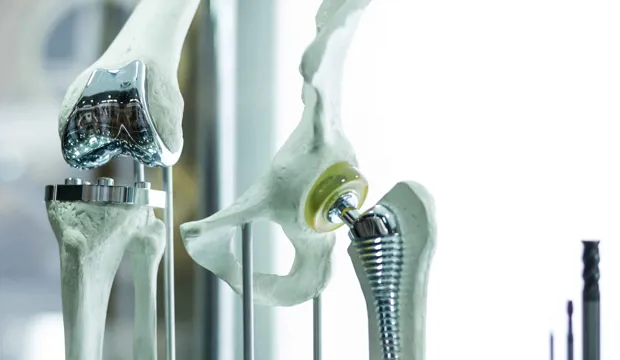
Prosthetics imitating the human body
Explore the body parts that can be replaced with prosthetic devices
With the constant advancement in materials and prosthetic technology, this engineering activity for kids explores different materials and their suitability in the use of prosthetics for different body parts. Students will gather data on different materials to create a presentation that can be used to discuss new materials and the part that they play in the development of prosthetic devices.
This free STEM resource is aimed at secondary school students. Students will be encouraged to think about how technology is changing our society.
Activity introduction
This is a quick and engaging introduction to a lesson looking at the properties of modern materials and how these are used to imitate human body parts.
This lesson can be introduced by talking about skeletons. An anatomical skeleton can be used as a prop.
Do you know what can be done when joints wear out in our skeletons?
Students will be divided into teams and asked to come up with a list of body parts that can be replaced with prosthetic devices.
Each team will explain their results to the rest of the class. Students can vote for the device they think is most likely to be made in the future.
This activity will take roughly 15 minutes to complete.
What you will need
- Anatomical skeleton
The engineering context
The development of new materials with incredible properties is changing the way we live. From LCD TVs to super light airliners, these materials have quickly found their way into the modern technology around us. One area where modern materials have made a huge impact is in the development of prosthetic devices. Some of these devices are beginning to outperform ‘natural’ body parts.
The resources within this, and the related activities, encourage students to investigate the properties of smart materials and carry out some data manipulation. Students will also explore the possible moral and ethical issues associated with people potentially choosing to replace healthy body parts with artificial prostheses because they offer higher performance.
Suggested learning outcomes
By the end of this activity students will be able to explain what joints are and how they work. They will also be able to suggest links between modern technology and health.
Download the free activity sheet below!
All activity sheets and supporting resources are free to download, and all the documents are fully editable, so you can tailor them to your students’ and your schools’ needs.
The activity sheet includes teacher notes, guidance, useful web links, and links (where appropriate) to the national curriculum in each of the four devolved UK nations; England, Northern Ireland, Scotland and Wales.
Please share your classroom learning highlights with us @IETeducation.




